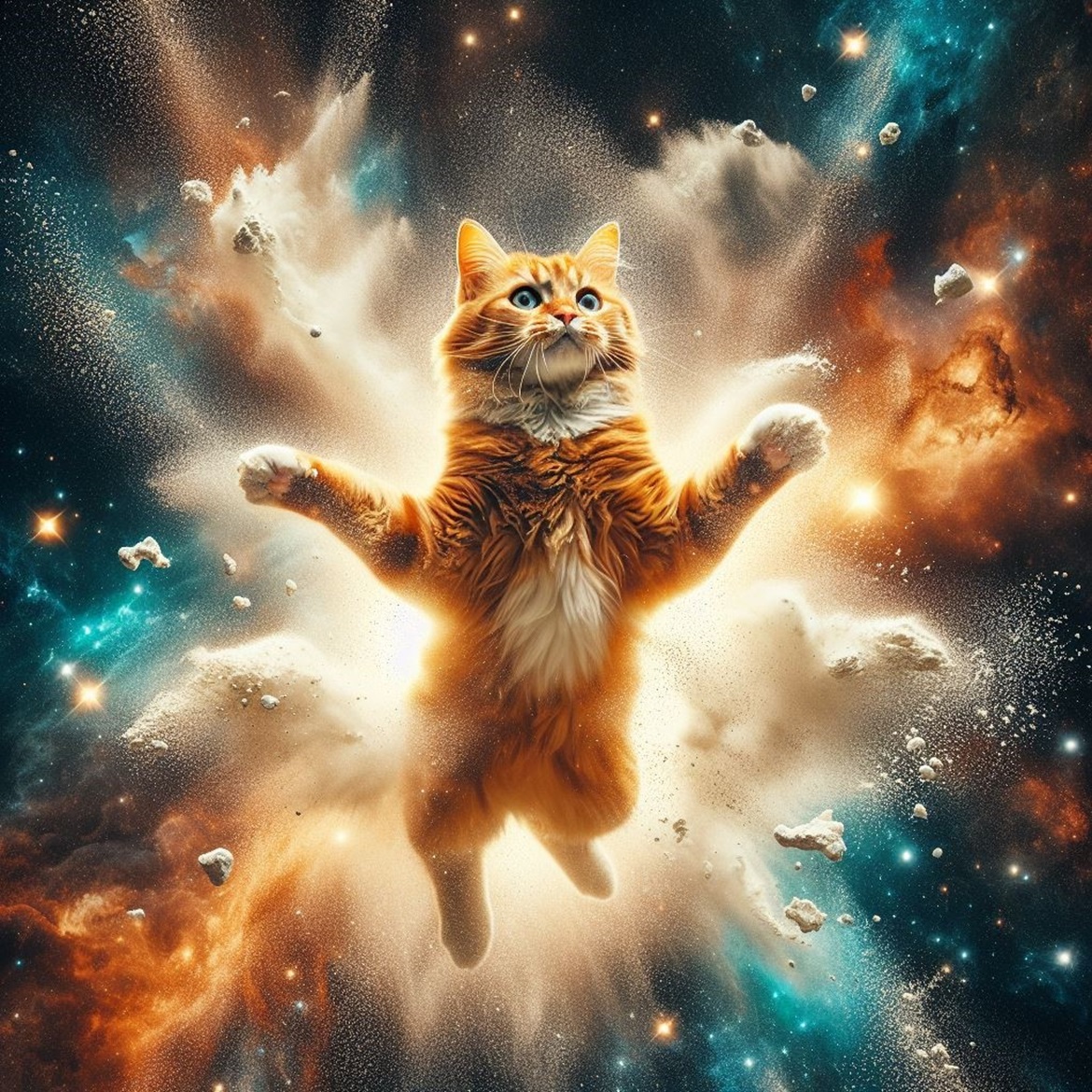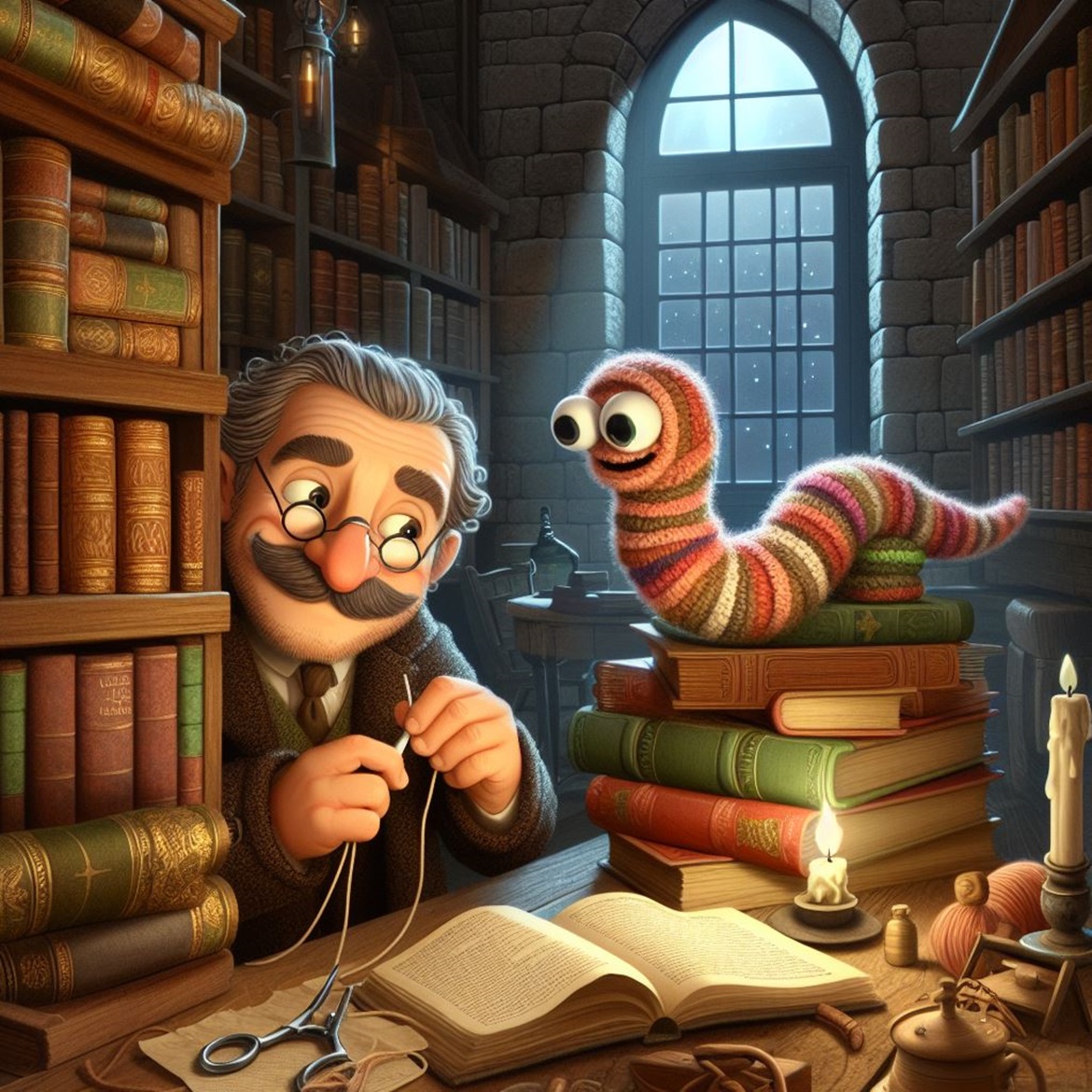In the bustling village of Humdrum, where the most exciting event was the local grocery store offering a two-for-one deal on celery, something extraordinary happened. This small corner of the world was about to become the epicenter of an internet phenomenon that would make “planking” look as passé as dial-up internet. The instigator? An unsuspecting tabby cat named Sir Whiskerton, who had as much interest in viral fame as a slug does in a saltmine.
It all began on a lazy Sunday afternoon, the kind that was perfect for doing absolutely nothing and feeling utterly content about it. Sir Whiskerton, in an act of feline curiosity that would make Schrödinger’s cat applaud from its quantum state, decided to embark on an adventure. This was no ordinary amble; it involved a daring leap onto the kitchen counter, a feat strictly forbidden by the human household codes of conduct.
Now, imagine the scene: Mrs. Ethel Smith, the grand dame of Humdrum, was in the midst of her weekly bake-a-thon. Flour dusted the air like snow in July, and the smell of freshly baked scones mingled with the faint odor of Sir Whiskerton’s recent escapade to the neighbor’s fish pond. The stage was set for an event that would catapult this tiny village into the annals of internet history.
As fate, or perhaps a rogue gust of wind from the open window, would have it, Sir Whiskerton’s magnificent leap was accompanied by a flour canister tipping spectacularly, showering him in a blizzard of white powder. At that precise moment, Ethel’s grandson, Billy, a child with a knack for being at the right place at the wrong time, snapped a photo. The image captured was nothing short of magical: Sir Whiskerton, mid-leap, looking like a feline astronaut embarking on a lunar mission, surrounded by a halo of flour.
Without a moment’s hesitation and with the reckless enthusiasm only a ten-year-old could muster, Billy uploaded the photo to the internet, accompanied by the caption, “Houston, we have a purr-blem!” What followed was the digital equivalent of the Big Bang.
The photo spread faster than gossip in a small town, ricocheting across social media platforms with the tenacity of a cat chasing a laser pointer. People from all corners of the globe were captivated by Sir Whiskerton’s impromptu space adventure. Memes sprouted like weeds after a spring rain. There were remixes, re-enactments, and even a short-lived campaign to have Sir Whiskerton replace the traditional astronaut iconography.
As Sir Whiskerton’s cosmic odyssey took on a life of its own, the sleepy village of Humdrum found itself thrust into the limelight. Tourists flocked to catch a glimpse of the now-celebrated feline astronaut, hoping to capture a bit of the magic for themselves. Local businesses capitalized on the frenzy, offering “Space Cat Scones” and “Astronaut Tabby Teas.” The local economy, previously as stagnant as a pond in August, was now booming.
Ethel Smith, once known only to her bridge club and the parish newsletter, was now fielding calls from talk shows and cat food companies vying for Sir Whiskerton’s endorsement. The cat in question, however, remained utterly indifferent to his fame, displaying the sort of detached coolness reserved for true celebrities and Zen masters.
But with great virality comes great scrutiny. Debates raged online about the ethical implications of pet fame. Philosophical musings on the nature of internet celebrity and its transient glory filled column inches and blog posts. Was Sir Whiskerton a pioneer in the exploration of the digital frontier, or merely a pawn in humanity’s relentless quest for entertainment? The world pondered, as it simultaneously clicked “share.”
In the heart of this whirlwind of attention, a deep, philosophical question began to surface, bobbing up through the frothy sea of memes and merchandising like a buoy of truth: What does it mean to truly go viral? Is it the fleeting adoration of millions, or is it something more profound, more lasting?
This question was answered in the most unexpected of ways.
One evening, as the sun dipped below the horizon, painting the sky with strokes of pink and orange, a peculiar phenomenon occurred. Across the globe, people reported seeing a faint image of Sir Whiskerton in the clouds, his fluffy visage gazing down upon the world with a serene indifference. Scientists scrambled to explain the phenomenon, talking heads pontificated, but the people of Humdrum knew the truth. Sir Whiskerton had transcended the digital realm, embedding himself into the very fabric of the universe.
The pandemonium reached a crescendo, then, as suddenly as it had begun, it quieted. The tourists departed, the talk shows found new distractions, and life in Humdrum resumed its gentle, predictable pace. But something had shifted. The village was no longer just a dot on the map; it was a place where magic had happened, however briefly.
Sir Whiskerton, for his part, seemed unphased by the whole affair. He continued his daily routines, his legendary leap immortalized in a framed photo on Ethel’s mantle. But every so often, he would pause, gazing off into the distance, as if hearing a call from the vast expanse of space, reminding him of his brief tenure as an astronaut.
And thus, the philosophical undertones of fame, existence, and the internet age were encapsulated in the viral voyage of a tabby cat from Humdrum. It became clear that virality wasn’t just about numbers or fleeting attention; it was about the stories we share, the connections we forge, and the indelible marks we leave on the tapestry of the universe.
In a surprising twist, it was revealed that the cloud formation phenomenon wasn’t entirely natural. A group of local artists, inspired by Sir Whiskerton’s adventure, had engaged in a bit of technological wizardry, projecting his image into the skies as a tribute. This revelation didn’t diminish the magic; if anything, it underscored the human desire to believe in and create wonder.
Sir Whiskerton’s escapade served as a reminder that amidst the cacophony of the digital age, there are still stories capable of uniting us, making us laugh, and inspiring us to look up at the sky in wonder. In the end, the legacy of the cat who went viral wasn’t just a collection of likes and shares, but a moment of global unity and joy, a fleeting glimpse of something greater than us all.
Humdrum returned to its serene state, its brief brush with fame a cherished memory. Sir Whiskerton, blissfully unaware of his philosophical impact, settled down for a nap, a contented purr escaping his lips. After all, in the grand scheme of the universe, he had ventured where no cat had gone before, leaving behind a tale that would be told for generations. A tale of a small village, a daring cat, and the day the world looked up and smiled together.



